Haddon Hall – Star of Stage & Screen
Even if you’ve never been to Haddon Hall, chances are that you’ve seen it. Perhaps no building in England has shown up in as many plays, movies, TV series and novels as this Tudor palace in Derbyshire. Whether standing in as the setting for no less than three adaptions of Jane Eyre or just being itself in the silent film classic Dorothy Vernon of Haddon Hall starring Canadian actress Mary Pickford, there is something so perfect about Haddon Hall that it has become the quintessential English country manor house. This morning our group travelling with Canadian military specialists Liberation Tours will visit Haddon Hall to find out why it has been called, ” The most perfect house to survive from the Middle Ages.” Won’t you join us?
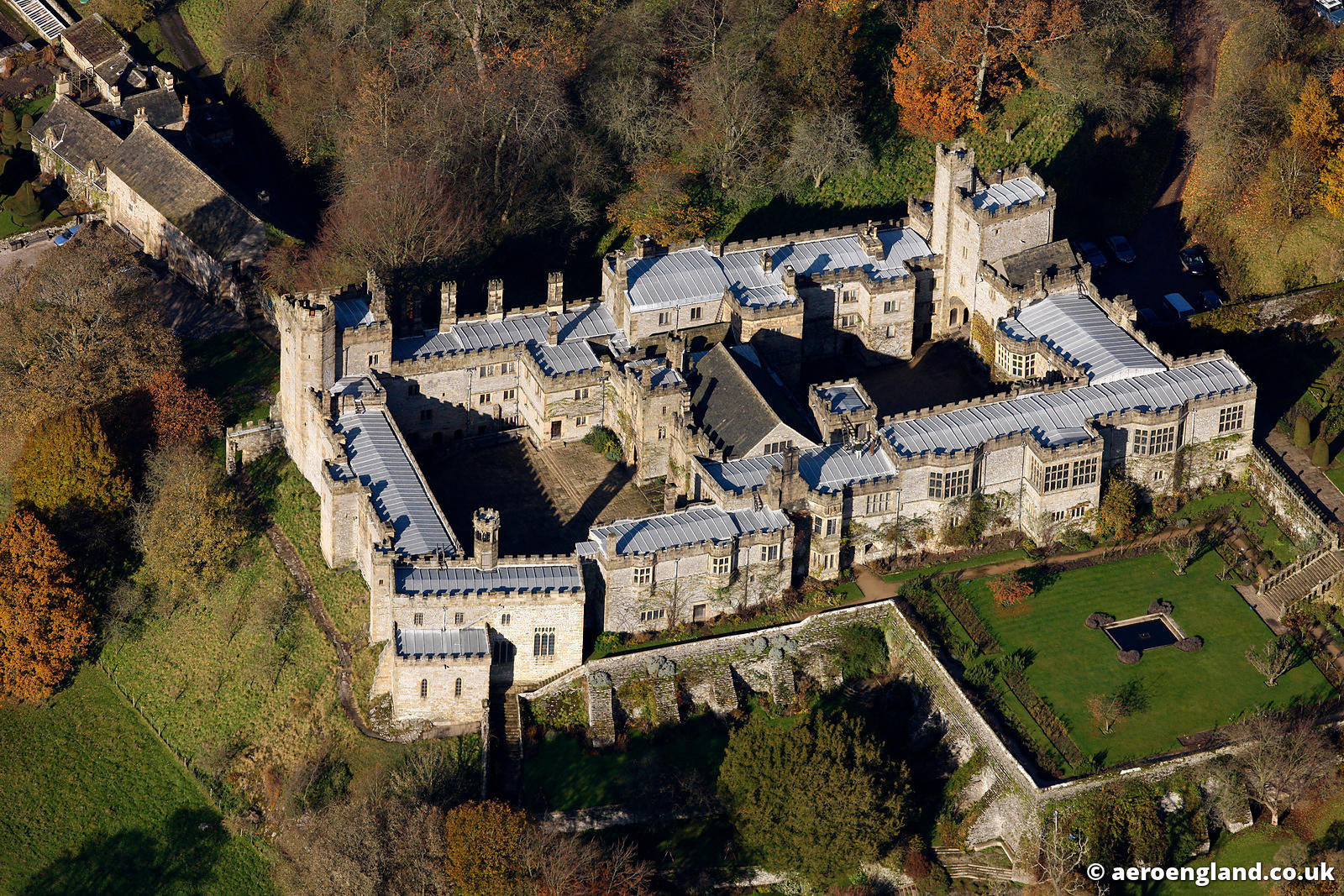
History of Haddon Hall
Very much like Warwick Castle which we visited the previous day, the history of Haddon Hall is closely related to the Norman presence in England following the conquest of 1066. The earliest recorded owner of the land as recorded in the Domesday Book was a Norman knight by the name of William Peverel who had a manor house on the spot. Subsequently tenants of the Peverel’s, the Avenell family came into possession. When Richard de Vernon married Avice Avenell in 1170 it began a period of Vernon ownership that lasted almost four hundred years. It was the Vernons who were responsible for building most of what is Haddon Hall today.
This coloured map shows the various stages when additions were made, lasting from the late 1100’s all the way up to 1620.
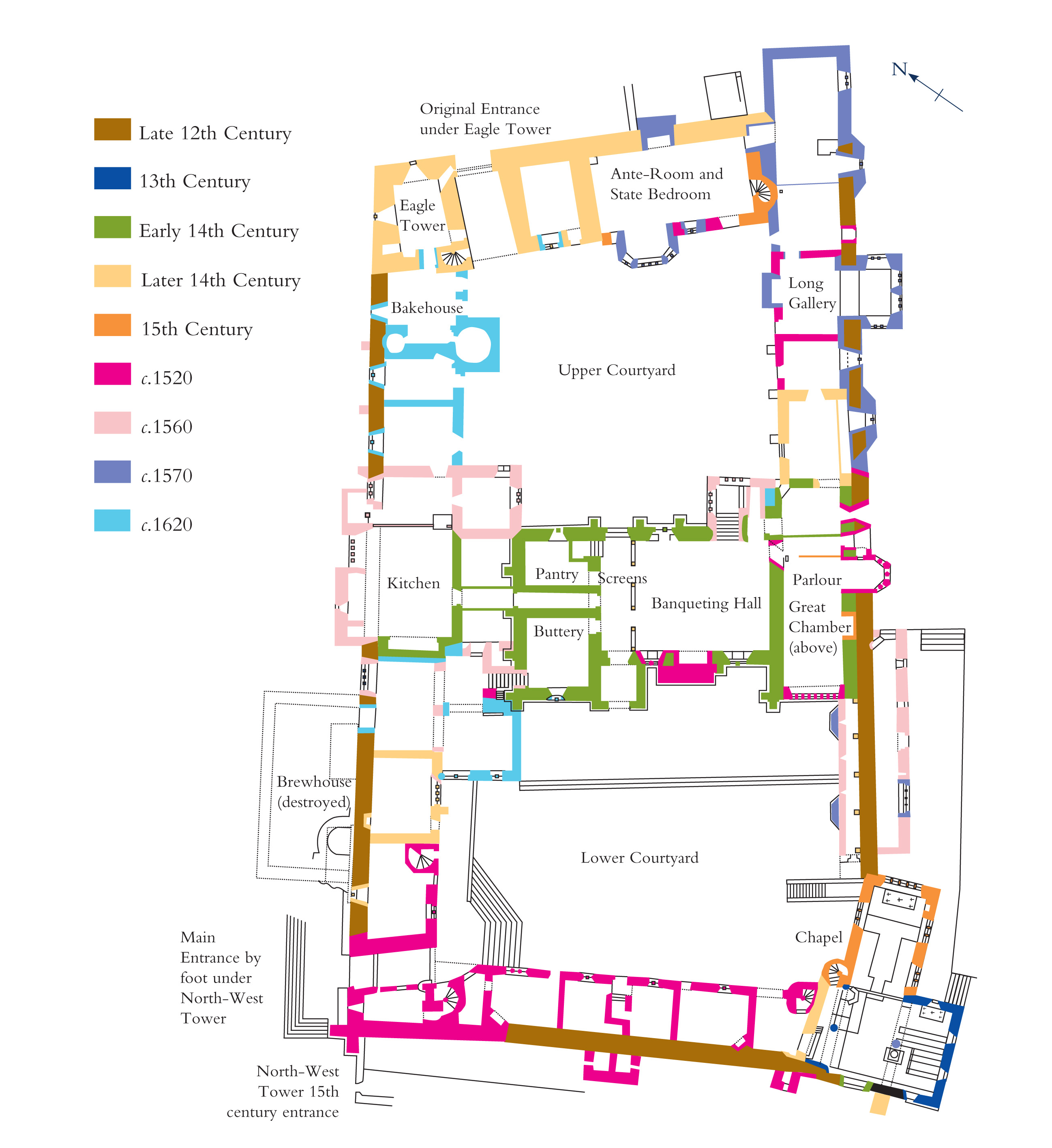
1194 was an important date for Haddon Hall as the Vernons received a licence from the king to erect a wall around the building. This was a big deal because Haddon Hall was never a fortified castle, but only a country residence and monarchs were naturally leery of noblemen building walls behind which they could remain during periods of instability or civil war.
Sir George Vernon was the last of the Vernons, but his line lingered on through his daughter Dorothy, even though if Sir George had his way, it would have been a different story. The romantic legends associated with Haddon Hall date from this period. Dorothy Vernon was a Catholic and her suitor, John Manners a Protestant. The year was 1563 and intermarriage between these religious groups was rare and frowned upon by many, including Sir George who forbade Dorothy from marrying Manners. The result was that the two eloped, meeting on the famous tryst bridge which we will see on our visit. Things turned out for the best, all were reconciled, love conquers all etc.etc.etc. The bottom line is that the Manners family still owns Haddon Hall although from 1703 to the 1920’s it was not occupied as the Manners’ preferred to live a Belvoir Castle in Leicestershire. It’s not too shabby either.
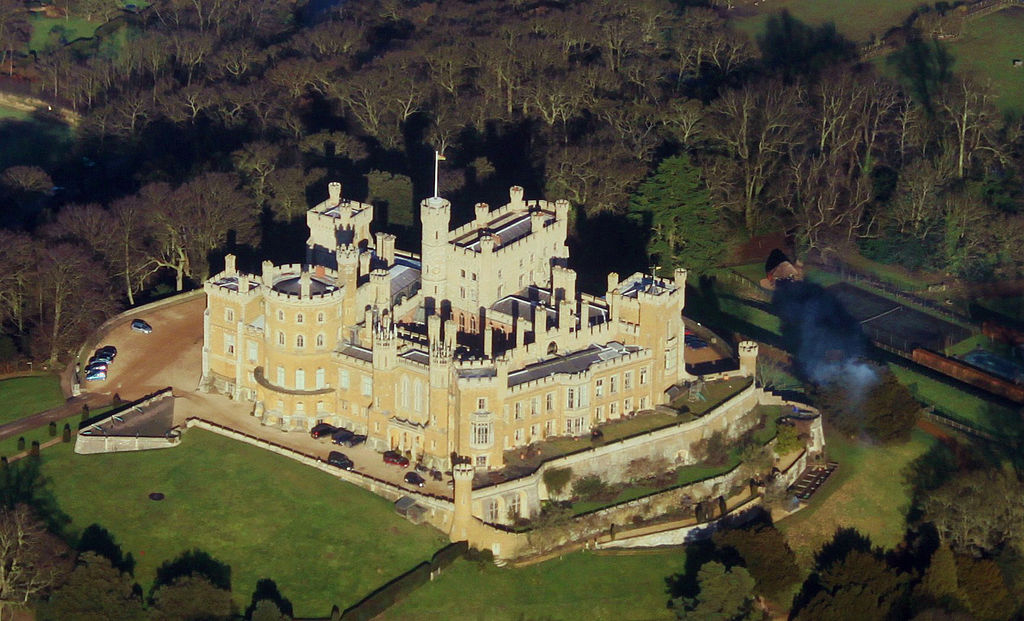
The result was that Haddon Hall almost literally fossilized, remaining frozen in time just as it had when the Manners moved to Belvoir. Only in the 1920’s did another John Manners, the 9th Duke of Rutland, realize what a gem he had inherited and proceeded the long process of restoring and modernizing Haddon Hall without destroying it’s essential Medieval character. Most people think he succeeded admirably.
Visiting Today
Haddon Hall is located in the Peak District of Derbyshire, considered one of the most scenic areas in Britain. The closest town is Bakewell, famous for its tarts. Also nearby is the spa town of Buxton from whence my maternal grandmother sprang. Past relatives might actually have been tenants of the Vernons or Manners.
The entry to Haddon Hall is a very pleasant lane that runs from the parking lot to the entrance, passing over the River Wye on the way.
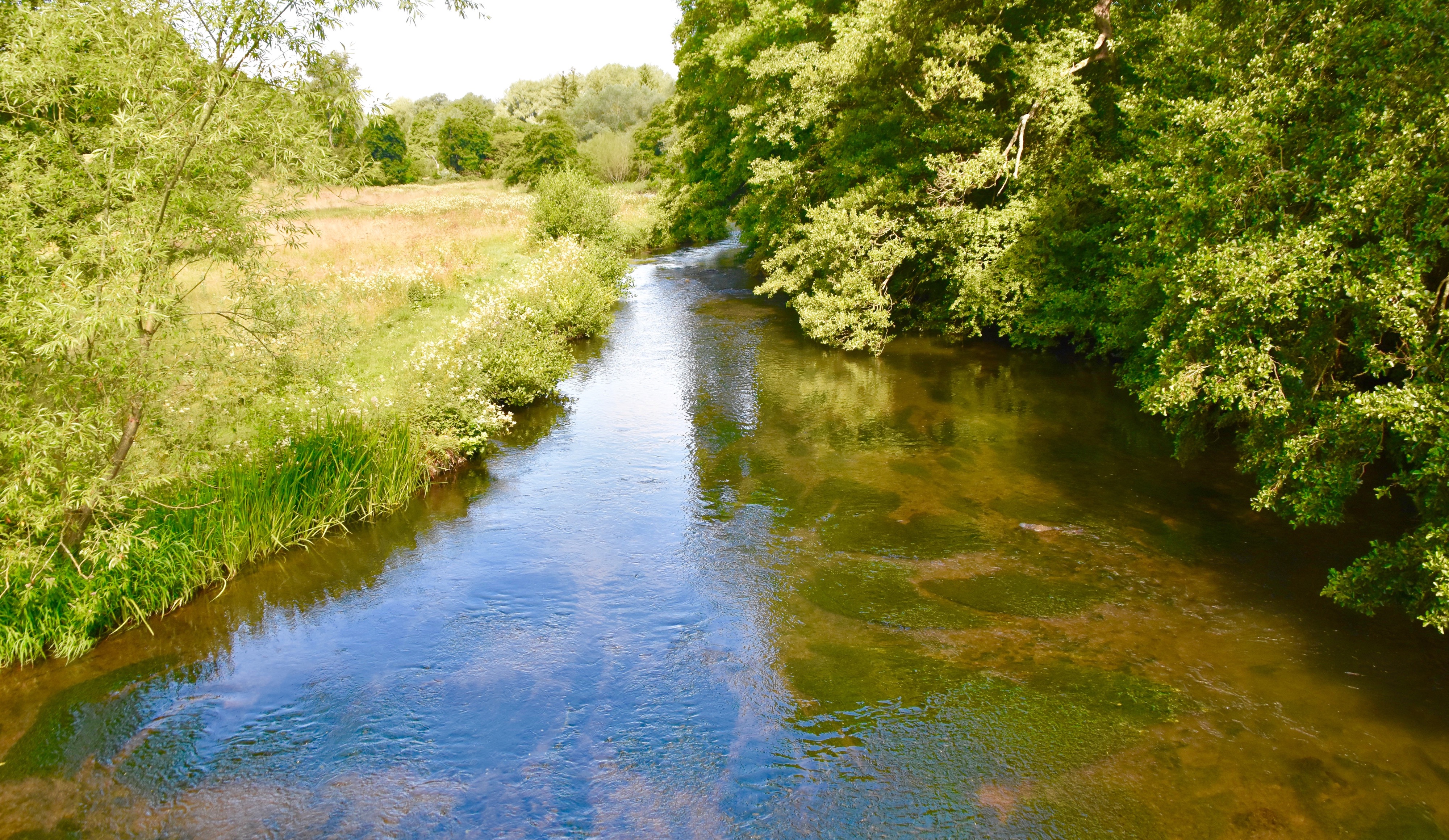
After paying the entry fee of £15.75 (£15.00 for seniors) one is free to roam most of the grounds and all the rooms that are open to the public. While there are no audioguides, there are very well informed docents on site who were able to answer any questions we had. The place to start is the Lower Courtyard from which a number of rooms branch of in all directions. As you can see it was a glorious day and the place was not swarming with tourists.
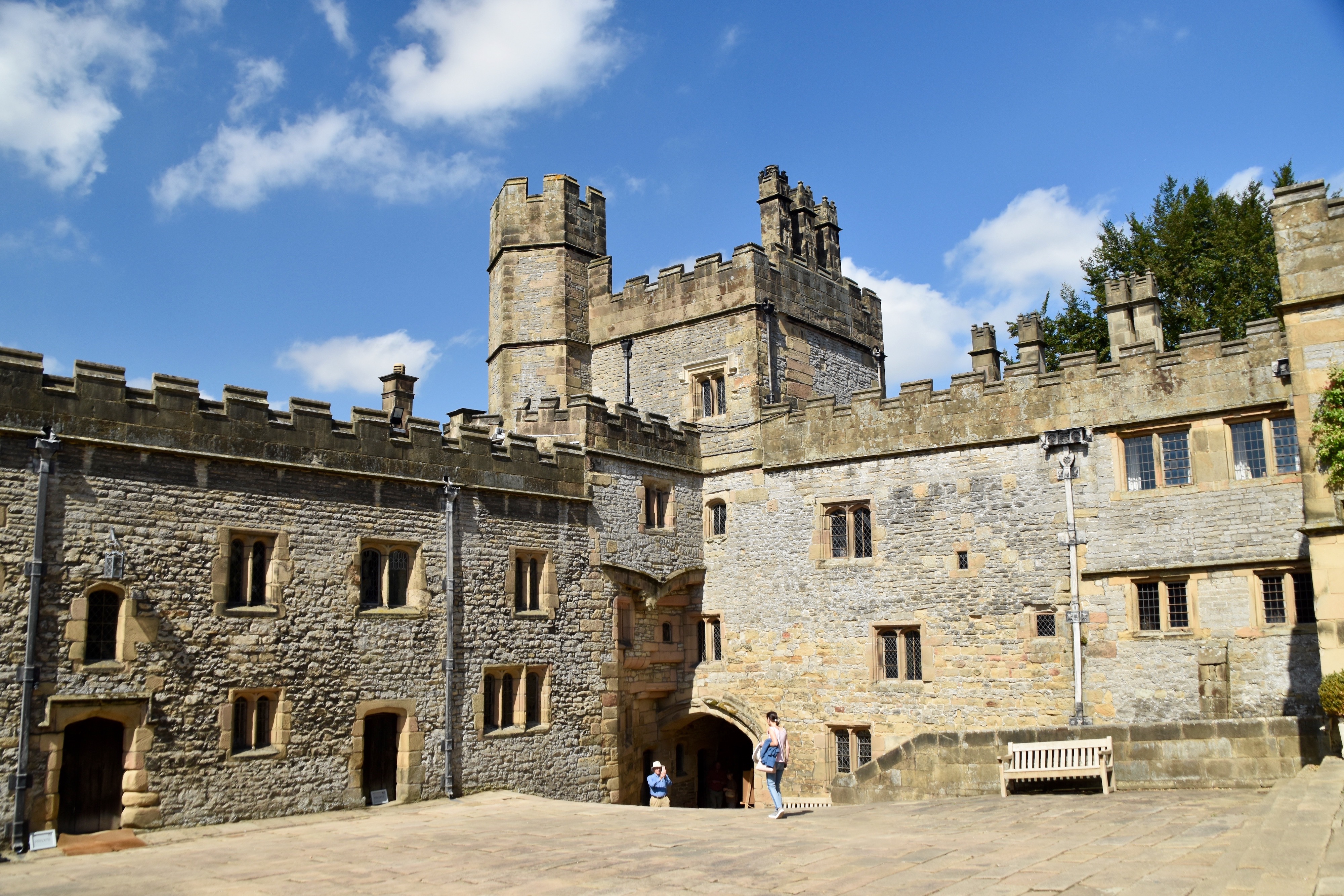
Here are just a few of the highlights of the interior of Haddon Hall.
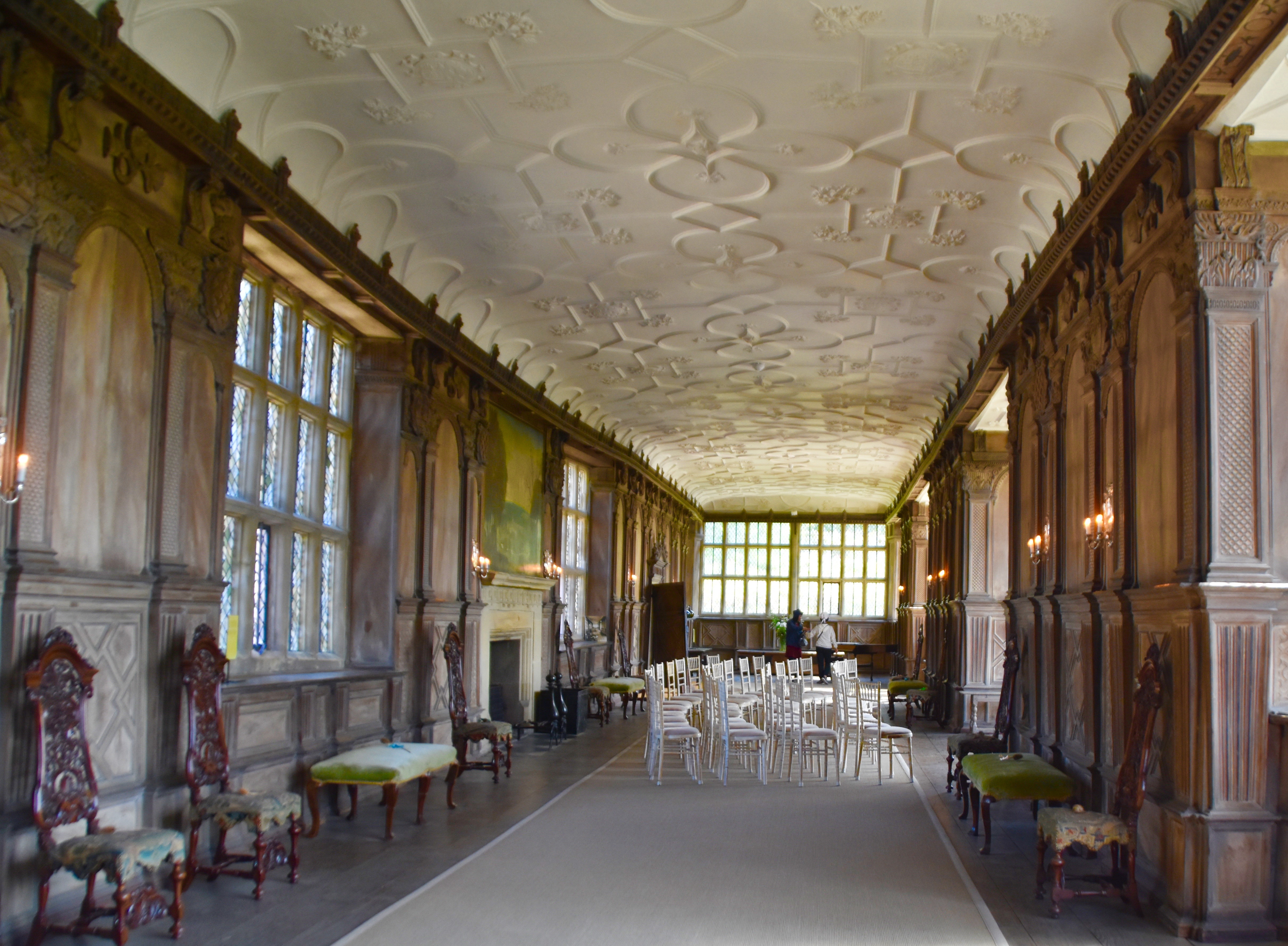
The Long Hall is one of the most striking rooms you’ll find in any English manor house. Today it was set up for a harpist recital, remaining true to its original use as a place of music and dance. There are two recitals everyday in the Long Hall.
Here is a detail from a sideboard that I found intriguing. What the relationship of the two figures was is not clear, but it clearly portrays an African woman and a European man. It’s these little things that are often just as interesting as something more grandiose.
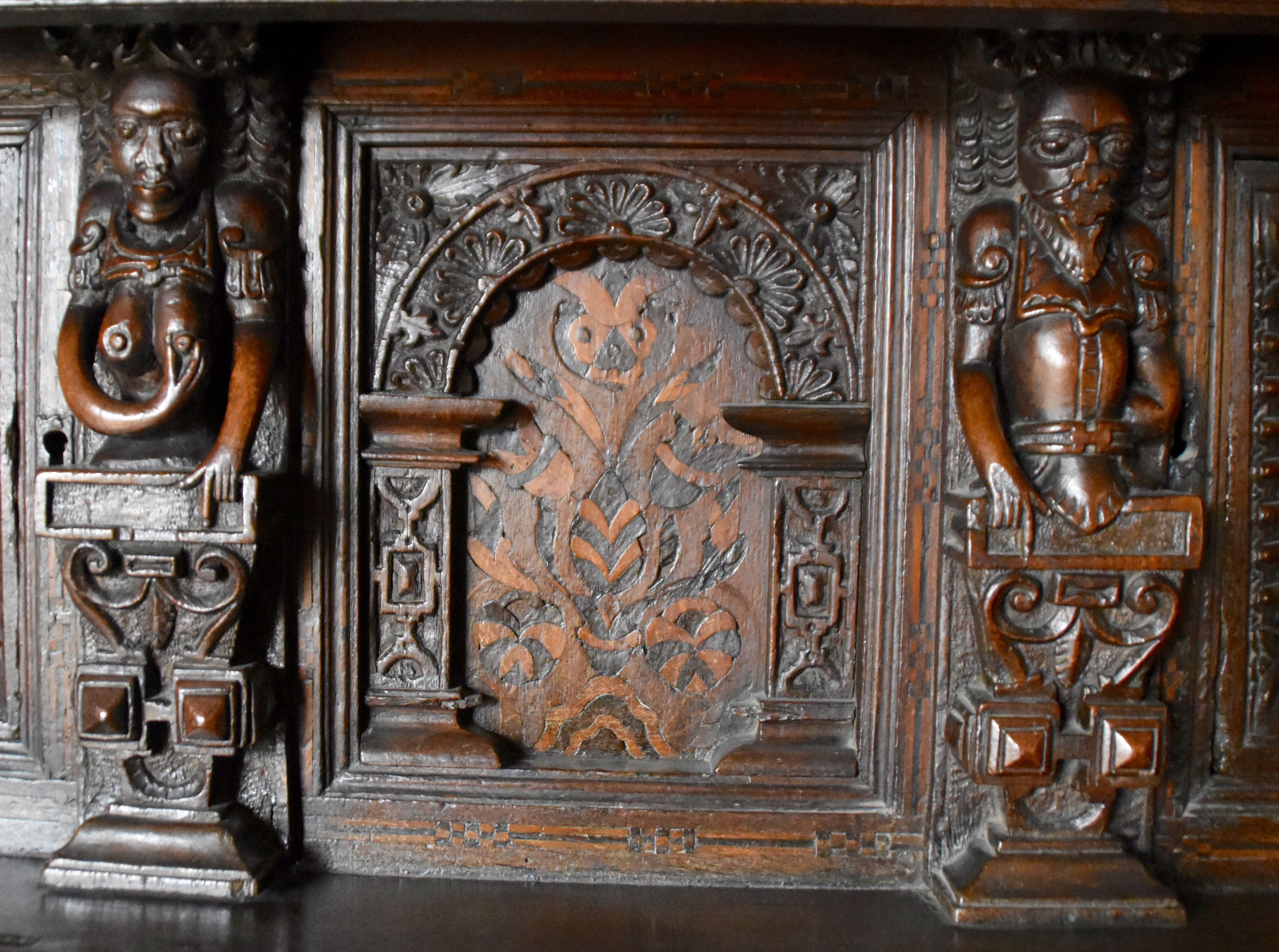
This excellent wood carving is a depiction of the stations of the cross as found in the Chapel at Haddon Hall. It is noteworthy for inclusion of the Resurrection as the 15th and final station. It is apparently extremely rare to find the Resurrection as one of the stations. As noted the Vernons were Catholics and during the periods of persecution of that religion in England, the owners of Haddon Hall had to conceal overt symbols of Catholicism like this carving and a number of frescoes that were whitewashed over.
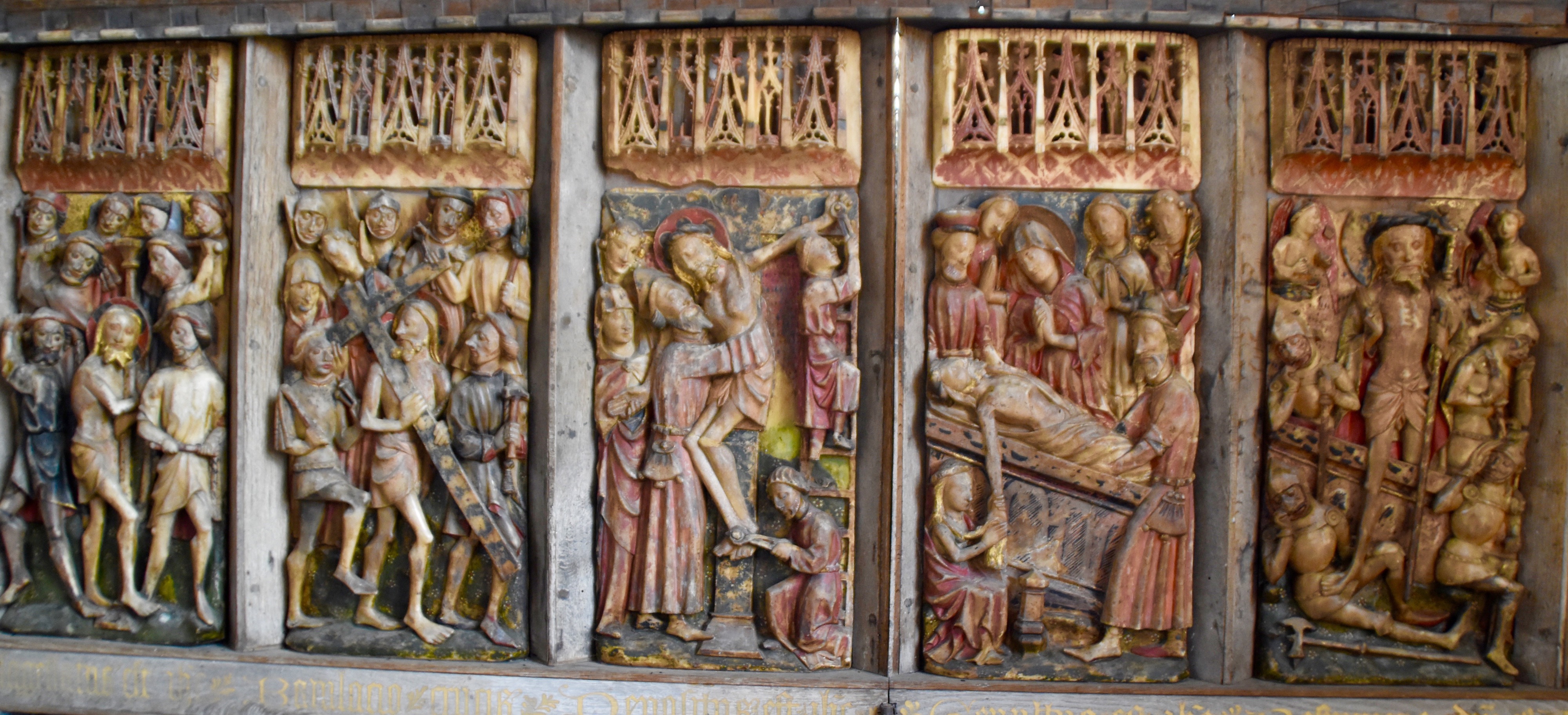
Here is a closeup of another woodcarving from the Chapel, depicting Christ at the Last Supper and with the bread and wine that would become the basis for the rite of Holy Communion.
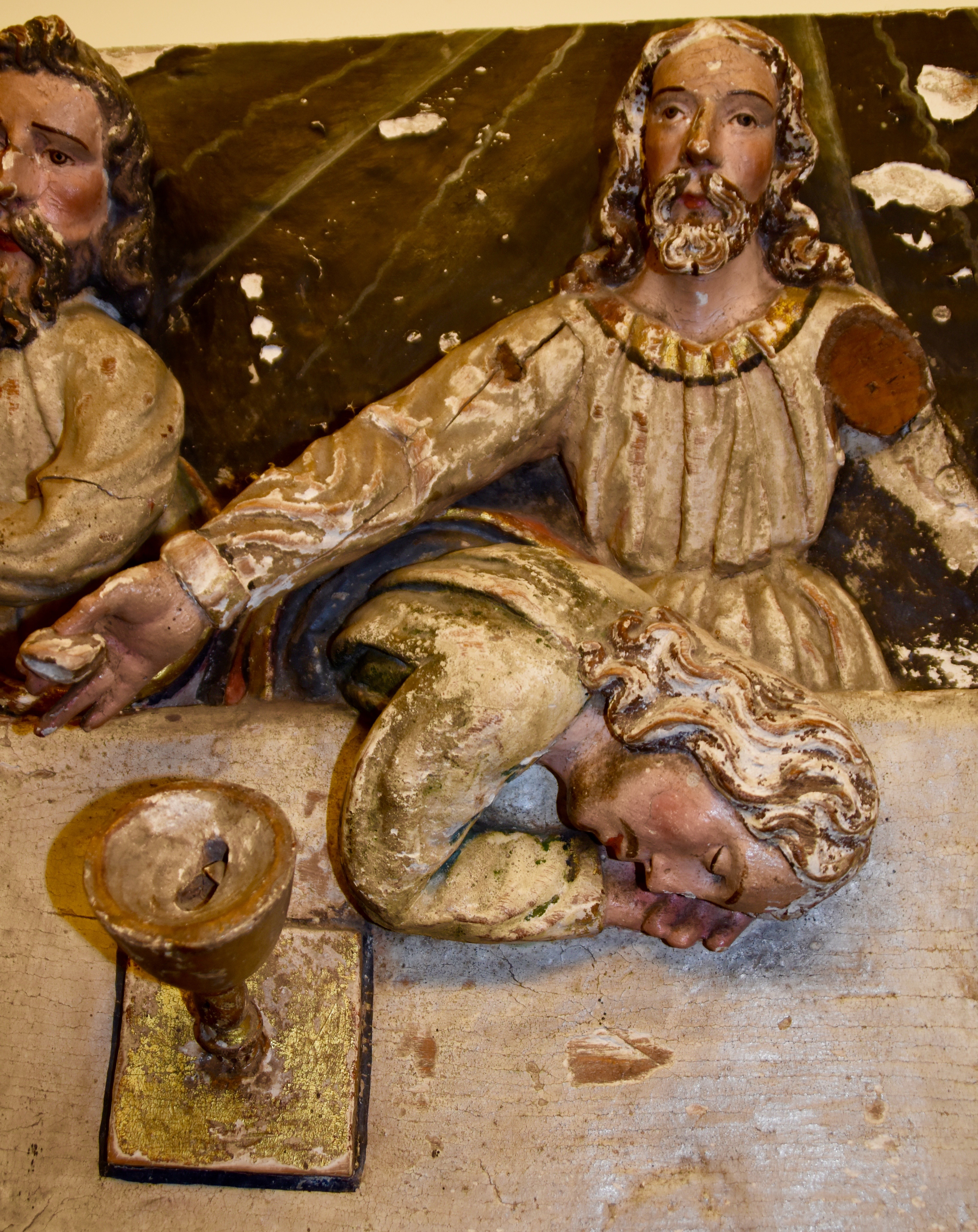
Here is my wife Alison and sister Anne pretending to be mistresses of Haddon Hall.

The tomfoolery was not limited to the women as my friend Rob and I came upon jester’s hats lying about in one of the rooms and couldn’t resist. Now I know the saying, ‘There’s no fool like an old fool’, has some merit.
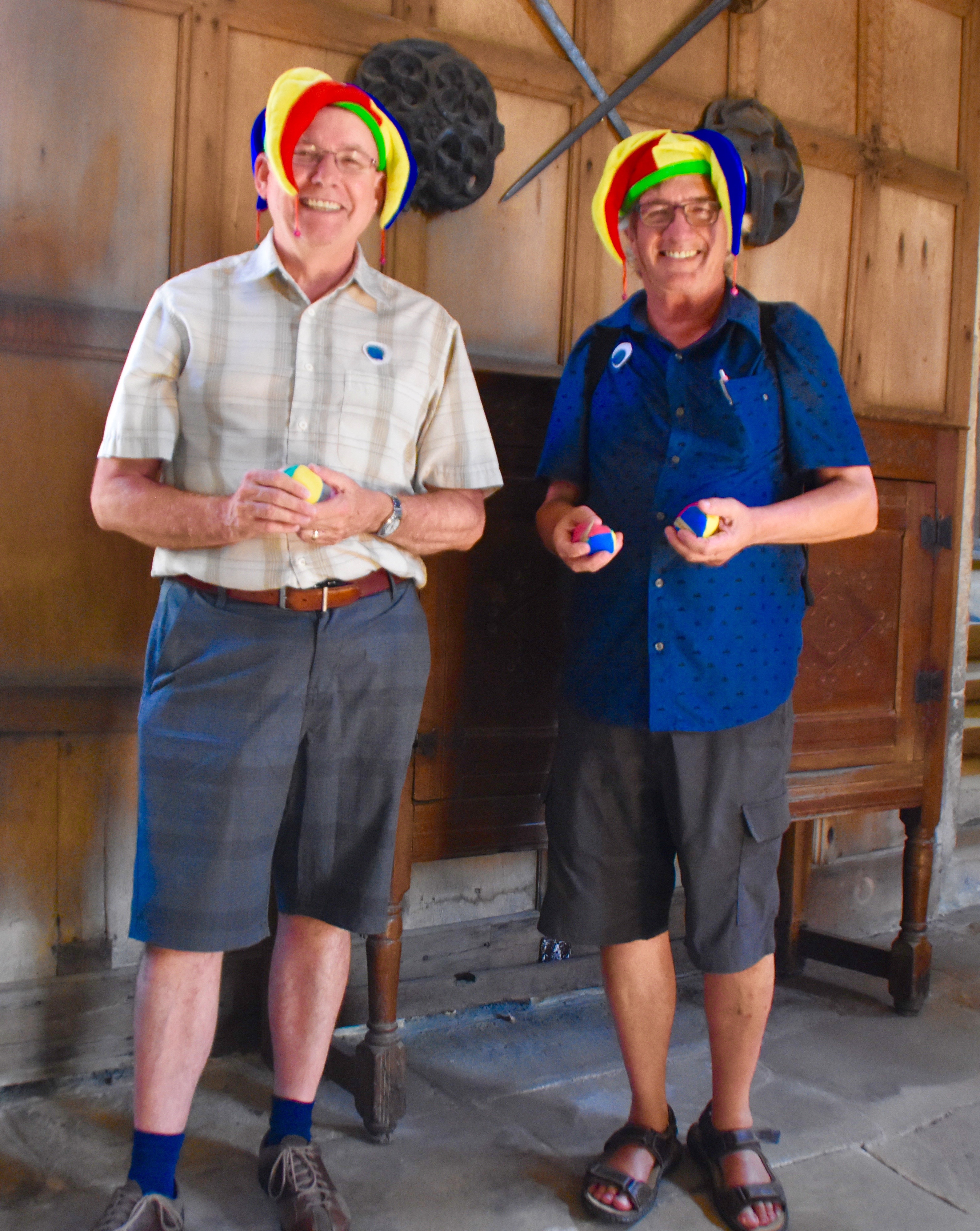
Now it was time to exit the building and tour the gardens for which Haddon Hall is also justly famous and to be honest, I enjoyed them more than the interiors.
Who can resist a wall of English roses? Not Alison.
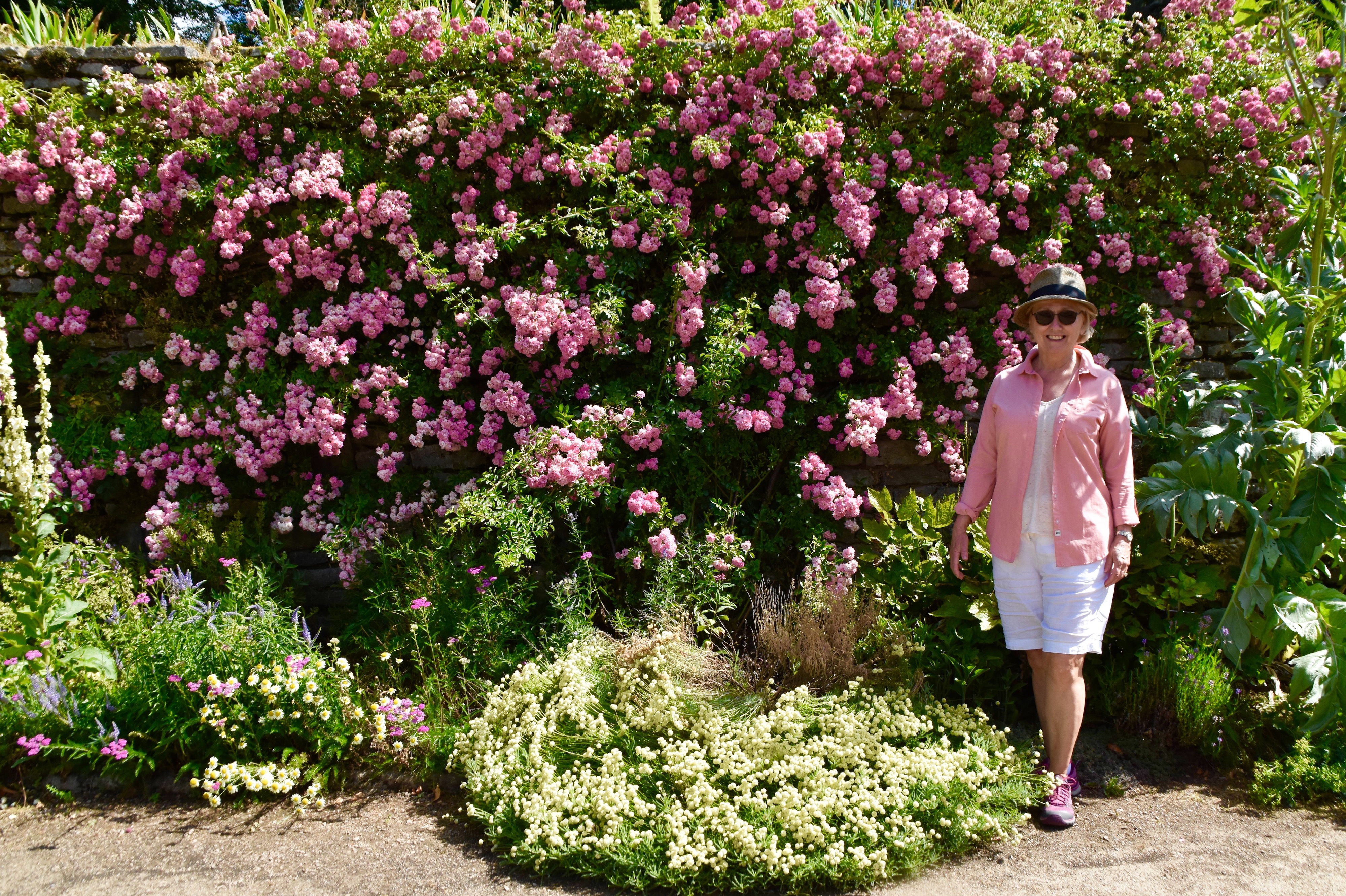
Neither could this butterfly resist a visit to this butterfly bush which I noticed grows in great profusion in the English countryside. It’s actually an invasive species from Asia,
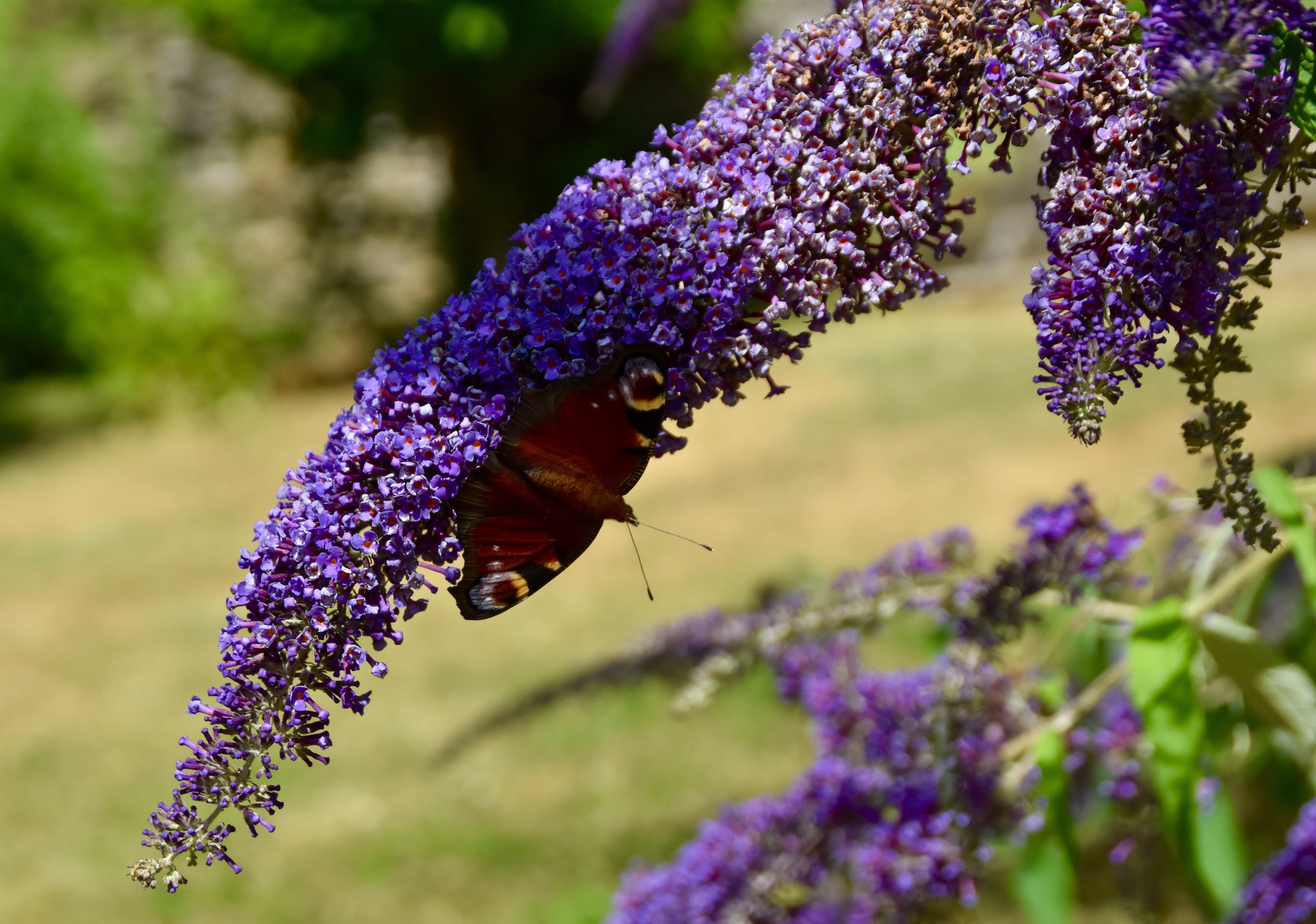
This is the Haddon Hall herb garden which is used to supply herbs to the restaurant associated with the place.
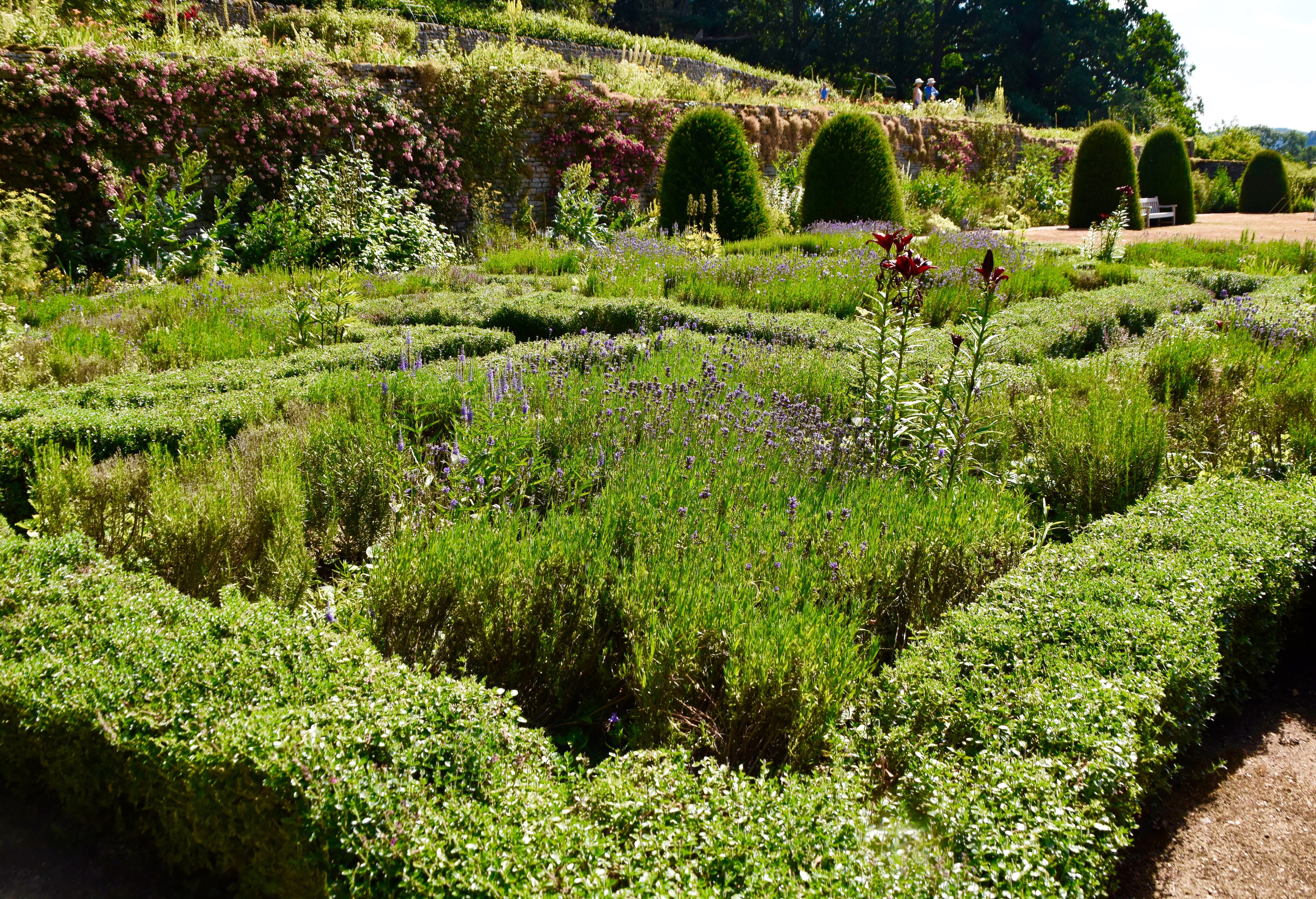
This is a better view of the herb garden from the upper terrace.
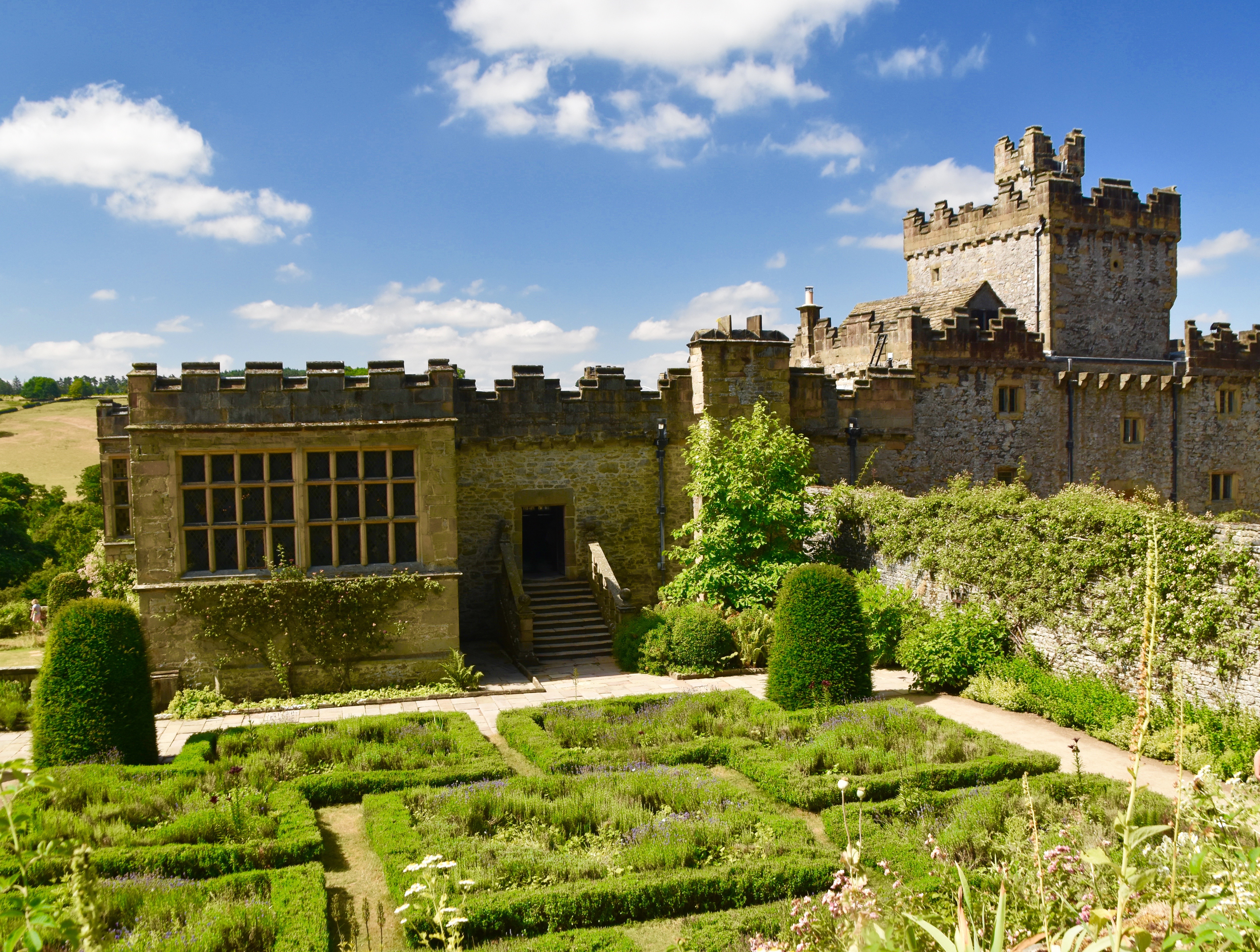
One final look at Haddon Hall from the top of the staircase leading to the lower garden.
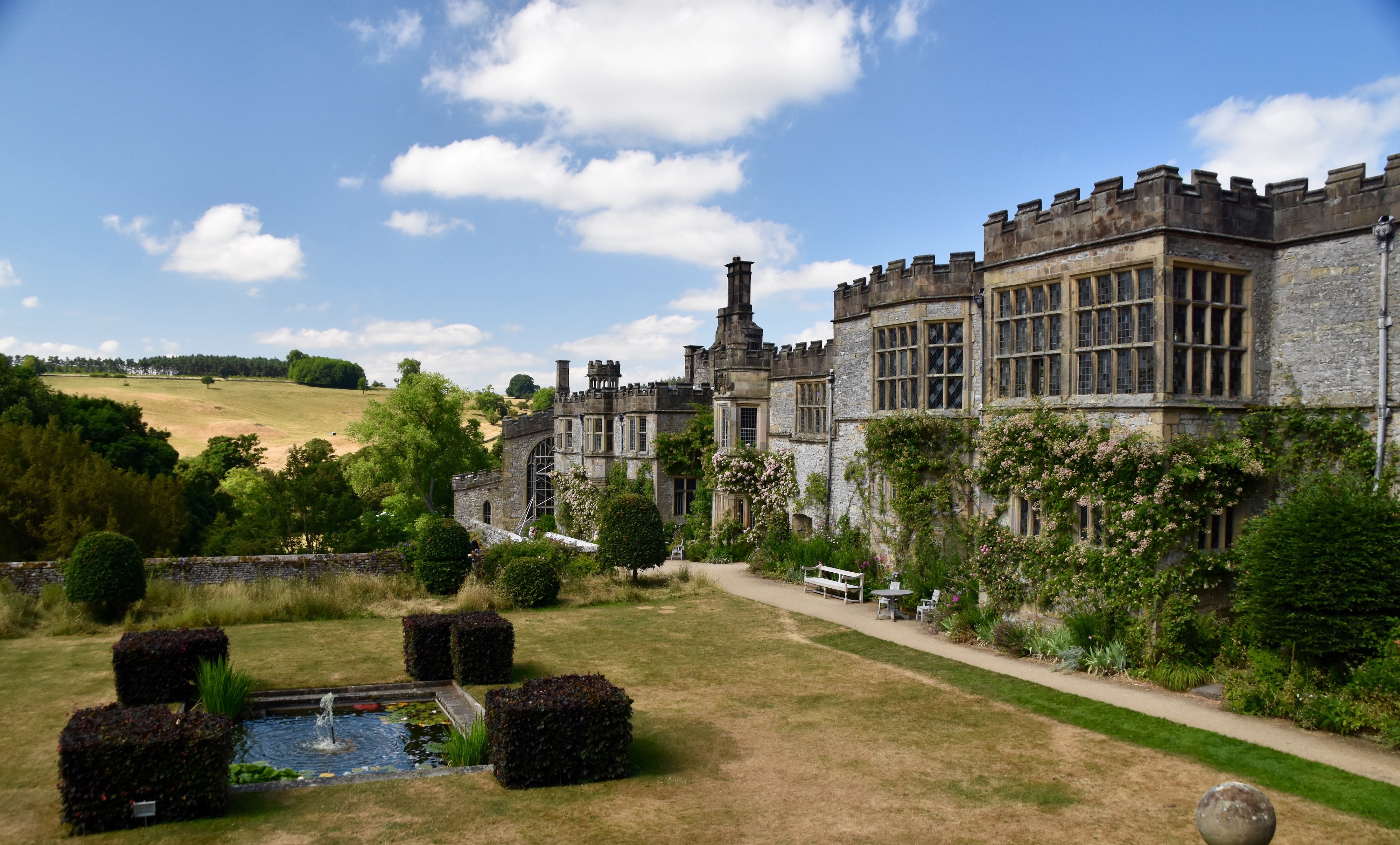
In the opposite direction you can see the famous tryst bridge upon which Dorothy and John allegedly met for their elopement.
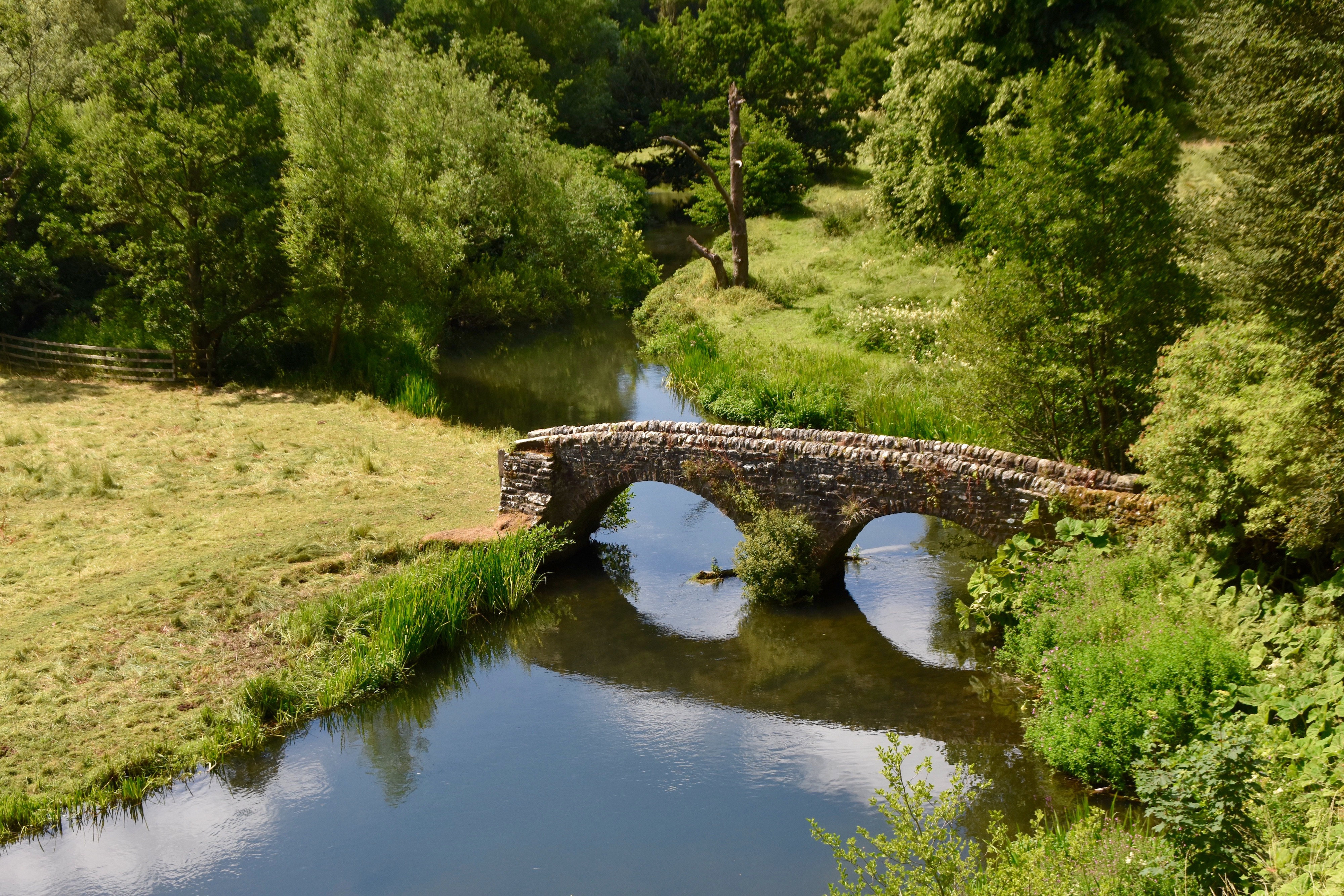
Liberation Tours likes to hold special lunches in historic places and our tables were ready in the 17th century room that once was above the stables, the smell of horse manure replaced with the aroma of roasting meats and vegetables. I had an absolutely outstanding fish pie which was one the best things I ate on the entire trip. Naturally dessert was one of the Bakewell tarts from the nearby town that made them famous.
After lunch we will head north for the city of York with a stop at the site of the Battle of Towton, one of the bloodiest ever fought on English soil. I hope you’ll come along.

